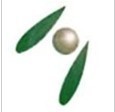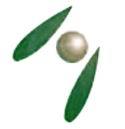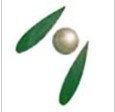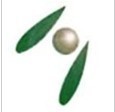L(+)-Citrulline
About L(+)-Citrulline
Molecular Formula: C6H13N3O3
Molecular Weight: 175.19
CAS Number: 372-75-8
EINECS: 206-759-6
The organic compound citrulline is an -amino acid. Its name is derived from citrullus, the Latin word for watermelon, from which it was first isolated in 1930. It has the idealized formula H2NC(O)NH(CH2)3CH(NH2)CO2H. It is a key intermediate in the urea cycle, the pathway by which mammals excrete ammonia.
Although citrulline is not coded for by DNA directly, several proteins are known to contain citrulline as a result of a posttranslational modification. These citrulline residues are generated by a family of enzymes called peptidylarginine deiminases (PADs), which convert arginine into citrulline in a process called citrullination or deimination. Proteins that normally contain citrulline residues include myelin basic protein (MBP), filaggrin, and several histone proteins, whereas other proteins, such as fibrin and vimentin are susceptible to citrullination during cell death and tissue inflammation.
Patients with rheumatoid arthritis often have detectable antibodies against proteins containing citrulline. Although the origin of this immune response is not known, detection of antibodies reactive with citrulline (anti-citrullinated protein antibodies) containing proteins or peptides is now becoming an important help in the diagnosis of rheumatoid arthritis.
In recent studies, citrulline has been found to relax blood vessels.
Specification
Product name
L-Citrullin
Item
Specification
Appearance
White crystalline powder
Identification
Passed
Assay (HCLO4-titration)
99.0% Min
Optical Rotation[]D20
+26.01.0(C=8,in 6N HCL)
pH
6 ~ 7
Heavy Metals
0.001% Max
As
0.0001% Max
NH4+
0.10% Max
Loss on drying
0.50% Max.
Residue on ignition
0.10% Max.
Packing:25kg\drum
Storage:be stored in shady and cool place,keep away from sunlight and heat


Price:
- 50
- 100
- 200
- 250
- 500
- 1000+
More Products in Amino Acid Category
L-Valine
Molecular Formula : C5H11NO2
Solubility : Soluble in water
Purity : 99% minimum
Appearance : White crystalline powder
Grade : Other, Food grade, Pharmaceutical grade, Feed grade
Taste : Slightly sweet
L-Alanyl-L-alanine
Molecular Formula : C6H12N2O3
Solubility : Freely soluble in water
Purity : 98%
Taste : Slightly sweet
L-Proline
Molecular Formula : C5H9NO2
Solubility : 1.5g/100g ethanol 19 degC
Purity : >99.0%
Appearance : White
Grade : Industrial Grade
 |
A & Z Group Co.,Ltd
All Rights Reserved.(Terms of Use) Developed and Managed by Infocom Network Private Limited. |
 English
English Spanish
Spanish French
French German
German Italian
Italian Chinese (Simplified)
Chinese (Simplified) Japanese
Japanese Korean
Korean Arabic
Arabic Portuguese
Portuguese
 Send Inquiry
Send Inquiry






 Send Inquiry
Send Inquiry